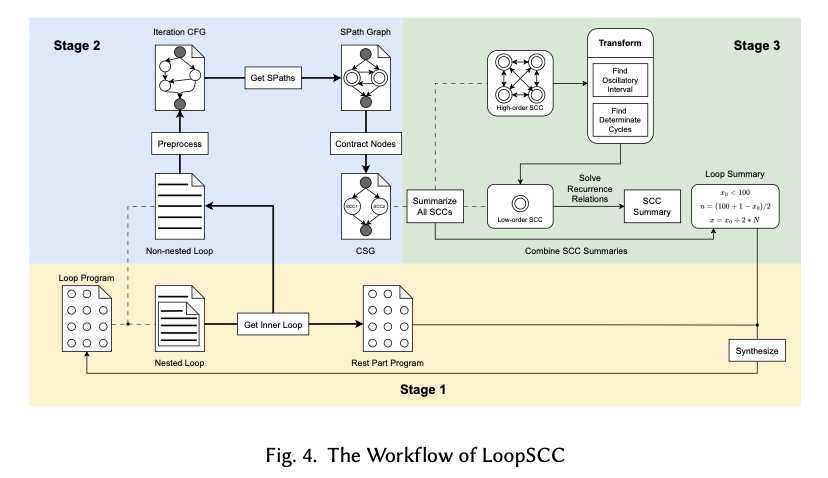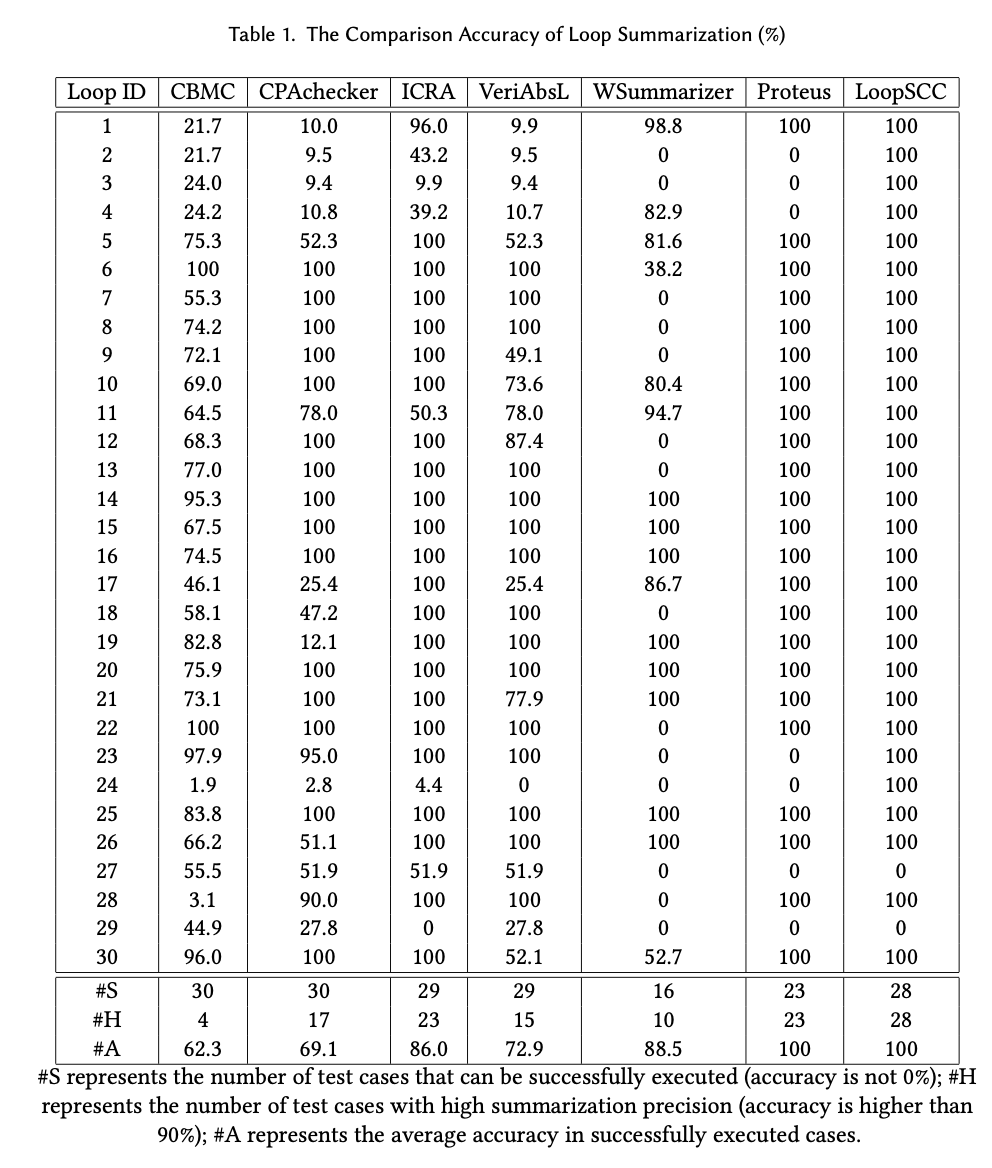Loop analysis with difficult control flows is a challenging problem that has persisted for more than two decades in program verification and software analysis. Challenges arise associated with the non-deterministic number of iterations and potentially exponential growth of control flow paths, especially for multi-branch loops. Traditional methods for loop analysis either oversimplify these structures, resulting in a loss of critical information, or are computationally infeasible due to path explosion. Since loops lie at the heart of many critical applications, such as compilers, program analyzers, and verification tools, overcoming these challenges is of fundamental importance to improve the accuracy and efficiency of software analysis.
Existing techniques for loop summarization fall into one of two categories: abstract interpretation or concrete interpretation. Abstract interpretation aims to approximate loop behavior by constructing new program structures that may not represent the true semantics of the original program. This approach very often leads to a loss of information and incomplete analysis. The concrete interpretation attempts to maintain the exact semantics of loop behavior, although it suffers from undecidability problems, particularly when dealing with multi-branch loops with irregular transitions between branches. Symbolic execution and model checking techniques are severely limited by path explosion in the case of multi-branch loops, and summarization methods like Proteus and WSummarizer fail most of the time when the loop may contain complex branching patterns. and irregular.
Researchers from the Institute of Information Engineering and Nankai University present LoopSCC, a novel method for dealing with multi-branch loops with irregular control flow transitions. The process first deploys the nested forms of loops into a non-nested form, simplifying the loop structure. Then, by applying SCC, the control flow is reduced to a more efficient and detailed expression, i.e., the contracted single loop path graph (CSG). This approach involves “oscillatory intervals” that reflect periodic types of iterations within loops, thus ensuring correct summarization even when control paths are irregular. It is a direct innovation of this mechanism in the face of the limitations inherent to previous methods. It has provided a very accurate and efficient solution for complex loop structures.

LoopSCC operates on nested loops that are transformed into non-nested forms by applying Gaussian elimination techniques. Finally, the SCC-based control flow representation is abstracted and the multipath loops are translated into less complex structures that could then be summarized. CSG creation in general plays a vital role in decomposing complex control flows, and the oscillatory intervals make the method capable of summarizing loops whose transitions between branches do not follow the standard pattern. The researchers conducted extensive experiments on public datasets such as C4B and real-world programs including bitcoin and musl to show superior accuracy and scalability compared to other existing tools.
LoopSCC shows better performance compared to existing methods in terms of accuracy and scalability. It achieved 100% accuracy on standard benchmarks, placing it above popular tools such as CBMC, CPAchecker, ICRA, and VeriAbsL, among other state-of-the-art loop summarization methods, namely Proteus and WSummarizer. It also successfully handled a wide range of loop types, especially complex multi-branch loops with difficult control flow, which other approaches could not efficiently represent and summarize. In large-scale real-world software such as bitcoin and musl, LoopSCC can summarize 81.5% of loops, demonstrating exceptional scalability and practical applicability to handle real-world programming challenges.

LoopSCC offers significant advances in loop summarization by efficiently addressing the complexities of multi-branch loops with irregular transitions. By using SCC-based graph shrinkage along with wobble interval detection, it is an accurate and scalable solution that outperforms existing methods in terms of accuracy and practical applicability. This technique can greatly improve the functionality of program verification and software analysis tools, where it robustly solves one of the most difficult problems in loop analysis.
look at the Paper. All credit for this research goes to the researchers of this project. Also, don't forget to follow us on twitter.com/Marktechpost”>twitter and join our Telegram channel and LinkedIn Grabove. If you like our work, you will love our information sheet.. Don't forget to join our SubReddit over 55,000ml.
(Next LinkedIn Live Event) 'One Platform, Multimodal Possibilities,' where Encord CEO Eric Landau and Head of Product Engineering Justin Sharps will talk about how they are reinventing the data development process to help teams quickly build data models. Innovative multimodal ai.
Aswin AK is a Consulting Intern at MarkTechPost. He is pursuing his dual degree from the Indian Institute of technology Kharagpur. He is passionate about data science and machine learning, and brings a strong academic background and practical experience solving real-life interdisciplinary challenges.
<script async src="//platform.twitter.com/widgets.js” charset=”utf-8″>






